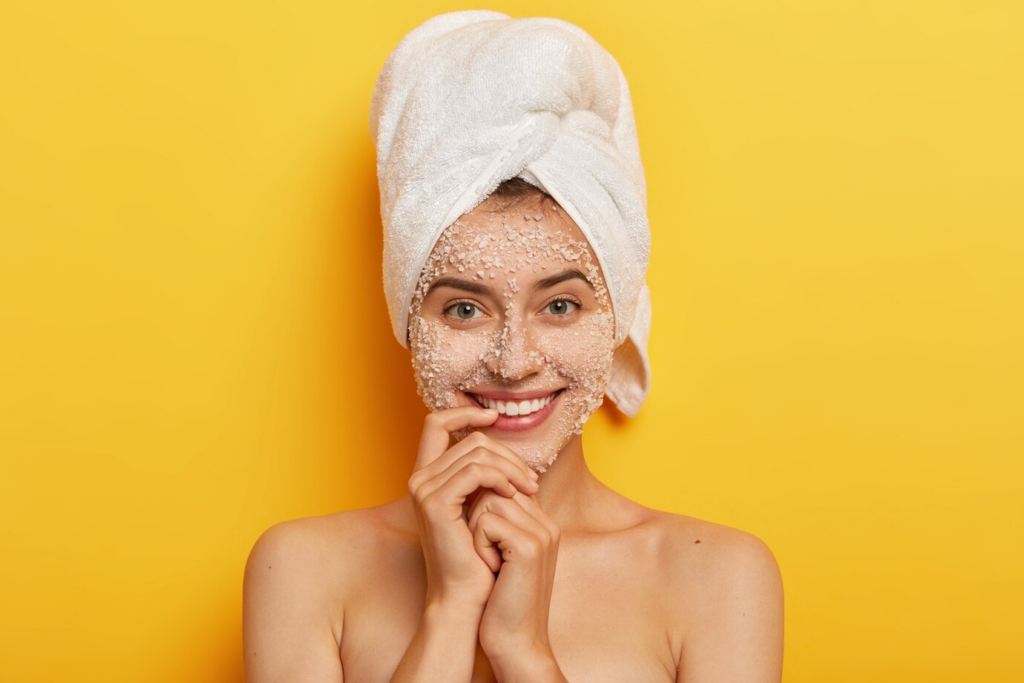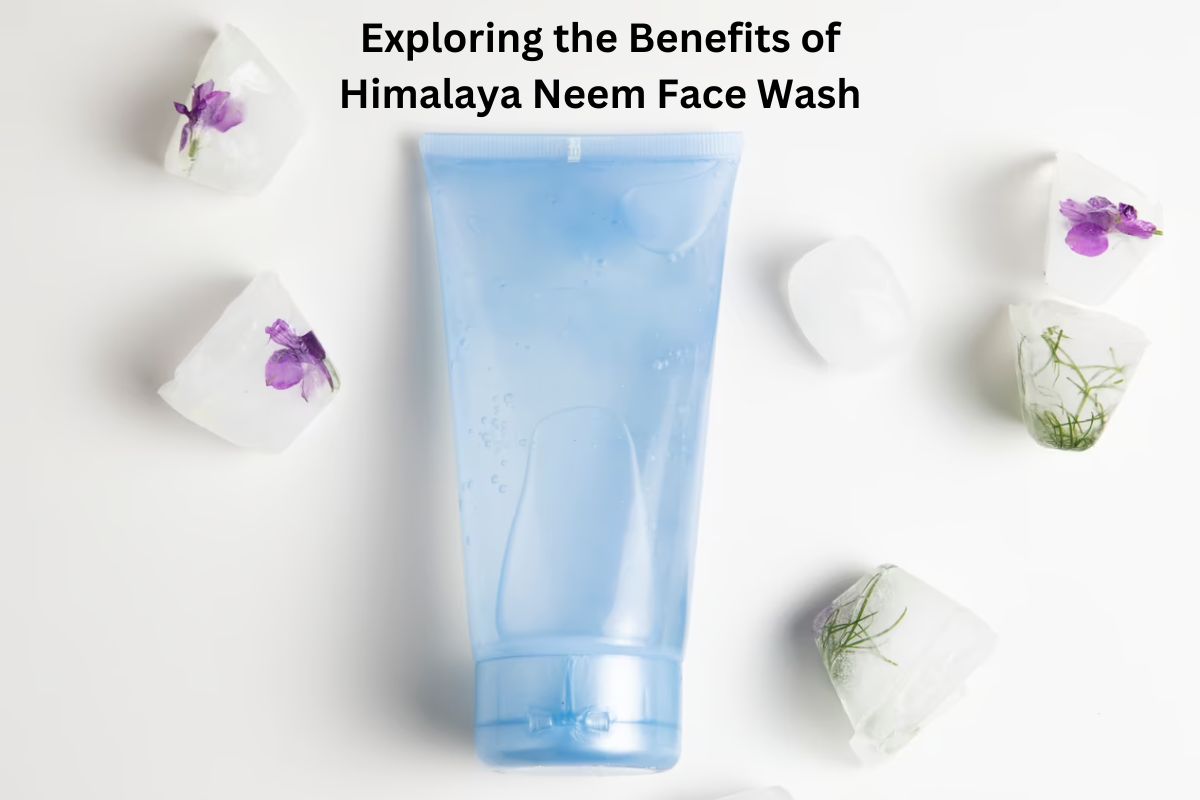Exfoliating scrubs have become a staple in the realm of skincare, celebrated for their ability to rejuvenate and revitalize the skin. These products are more than just another step in your skincare routine; they are the key to unlocking a radiant complexion. In this article, we’ll delve into the world of exfoliating scrubs, exploring what they are, their benefits, how to use them effectively, and important considerations for different skin types.
Understanding Exfoliating Scrubs: What Are They?
Exfoliating scrubs, also known as facial scrubs or exfoliants, are skincare products designed to remove dead skin cells and impurities from the surface of the skin. These scrubs often contain abrasive particles or ingredients that aid in physically scrubbing away the outer layer of dull, dead skin cells, revealing a fresher, more radiant complexion beneath.
Benefits of Exfoliating Scrubs:

- Improved Skin Texture: By sloughing away dead skin cells, exfoliating scrubs help to smooth the skin’s texture, leaving it softer and more even.
- Enhanced Radiance: The removal of dead skin cells exposes the healthier, brighter skin beneath, resulting in a more youthful and radiant appearance.
- Aid in Skin Cell Turnover: Exfoliation encourages the skin’s natural process of shedding old cells and generating new ones, promoting a more youthful complexion.
- Reduced Appearance of Pores: Regular exfoliation can help minimize the appearance of pores by preventing them from becoming clogged with debris and excess oils.
- Better Product Absorption: Exfoliated skin is more receptive to the absorption of serums, moisturizers, and other skincare products, maximizing their effectiveness.
Exfoliating Scrubs Dos and Don’ts
Dos:
- Choose an exfoliating scrub suitable for your skin type: Consider your skin’s sensitivity and needs when selecting a product.
- Perform a patch test: Before using a new exfoliant, test it on a small area of skin to ensure it doesn’t cause irritation.
- Follow the product instructions: Use the scrub as directed to prevent over-exfoliation, which can lead to irritation and sensitivity.
- Be gentle: Apply the scrub in gentle, circular motions, avoiding harsh scrubbing that can damage the skin.
Don’ts:
- Don’t over-exfoliate: Limit exfoliation to 2-3 times a week to prevent skin irritation and damage.
- Avoid using on sensitive or irritated skin: If you have skin conditions like acne or sunburn, consult a dermatologist before using an exfoliating scrub.
- Skip exfoliation if you’ve used other exfoliating products: Using multiple exfoliating products in one routine can be too harsh on the skin.
Choosing the Right Exfoliating Scrub for Your Skin Type
- Sensitive Skin: Opt for a gentle exfoliant with fine particles, avoiding harsh physical exfoliants. Chemical exfoliants with mild acids like lactic acid or PHA (polyhydroxy acids) are often better suited for sensitive skin.
- Dry Skin: Look for exfoliants with hydrating ingredients like hyaluronic acid or glycerin to prevent excessive dryness.
- Oily or Acne-Prone Skin: Chemical exfoliants with salicylic acid or glycolic acid can help unclog pores and control oil production.
- Normal or Combination Skin: A variety of exfoliants can work, but be mindful of not overdoing it. Consider alternating between physical and chemical exfoliants.
In Conclusion
Exfoliating scrubs are a versatile tool in your skincare arsenal, capable of transforming your skin’s texture and appearance. However, like any skincare product, they should be used wisely and in moderation. Regular exfoliation, combined with a tailored skincare routine, can yield remarkable results and help you achieve the radiant, healthy complexion you desire. Always remember to consult a dermatologist if you have specific skin concerns or conditions before incorporating any new skincare product into your routine.
FAQ
1. What is an exfoliating scrub?
An exfoliating scrub is a skincare product designed to remove dead skin cells and impurities from the surface of the skin. It typically contains abrasive particles or ingredients that help physically slough off the outer layer of dull skin, revealing smoother and more radiant skin underneath.
2. How often should I use an exfoliating scrub?
The frequency of exfoliation depends on your skin type. For most skin types, using an exfoliating scrub 2-3 times a week is sufficient. However, sensitive skin may require less frequent exfoliation, while oily or acne-prone skin might benefit from more frequent exfoliation.
3. Can I use an exfoliating scrub if I have sensitive skin?
Yes, you can use an exfoliating scrub if you have sensitive skin, but it’s important to choose a gentle formula with fine particles. Alternatively, consider using a chemical exfoliant with mild acids like lactic acid or PHA, which are generally better tolerated by sensitive skin.
4. Are there different types of exfoliating scrubs?
Yes, exfoliating scrubs come in both physical and chemical forms. Physical exfoliants contain abrasive particles that physically remove dead skin cells, while chemical exfoliants use acids or enzymes to dissolve dead skin cells. Choose the type that suits your skin type and preferences.
5. Can I use an exfoliating scrub if I have acne?
Yes, exfoliating scrubs can help unclog pores and remove dead skin cells that can contribute to acne. However, be cautious not to over-exfoliate, as this can worsen acne or irritate sensitive skin. Consult a dermatologist for personalized advice.
6. Should I exfoliate before or after cleansing?
It’s generally recommended to exfoliate after cleansing. Cleansing helps remove dirt and impurities from the skin’s surface, allowing the exfoliating scrub to work more effectively on the clean skin.







































